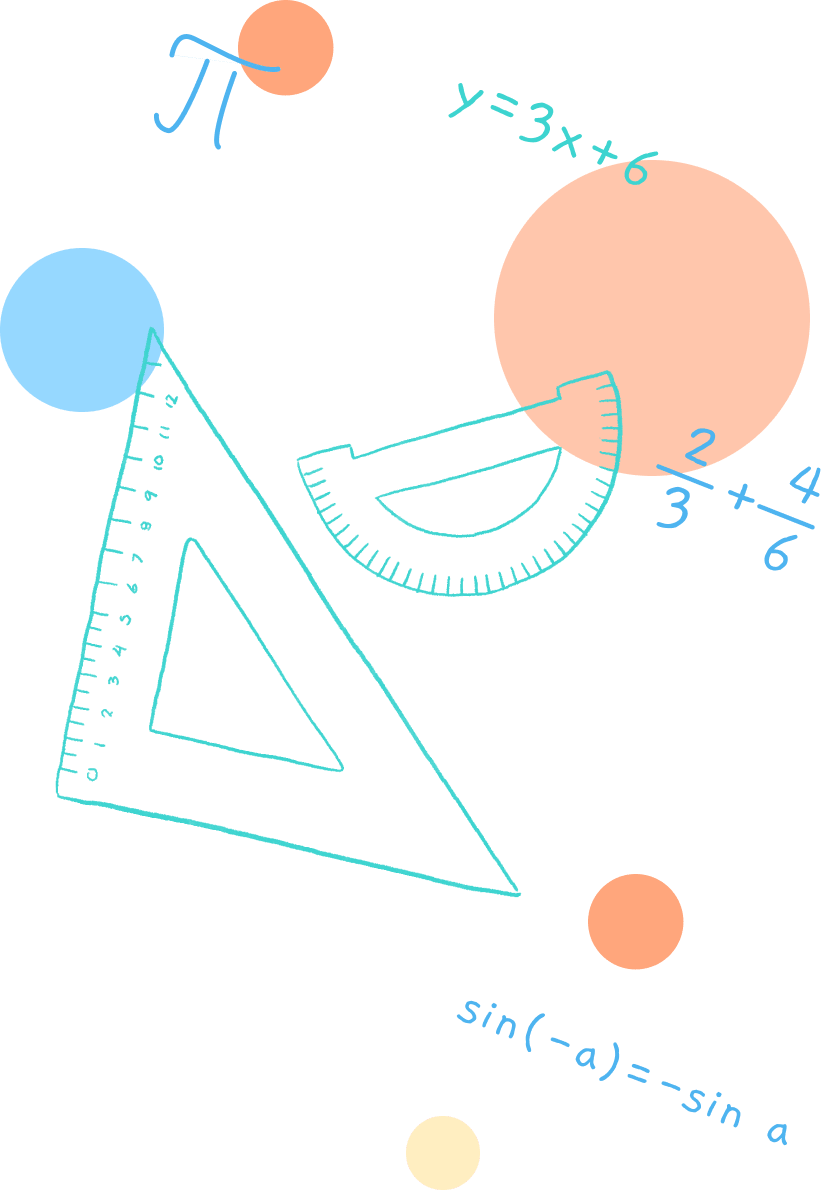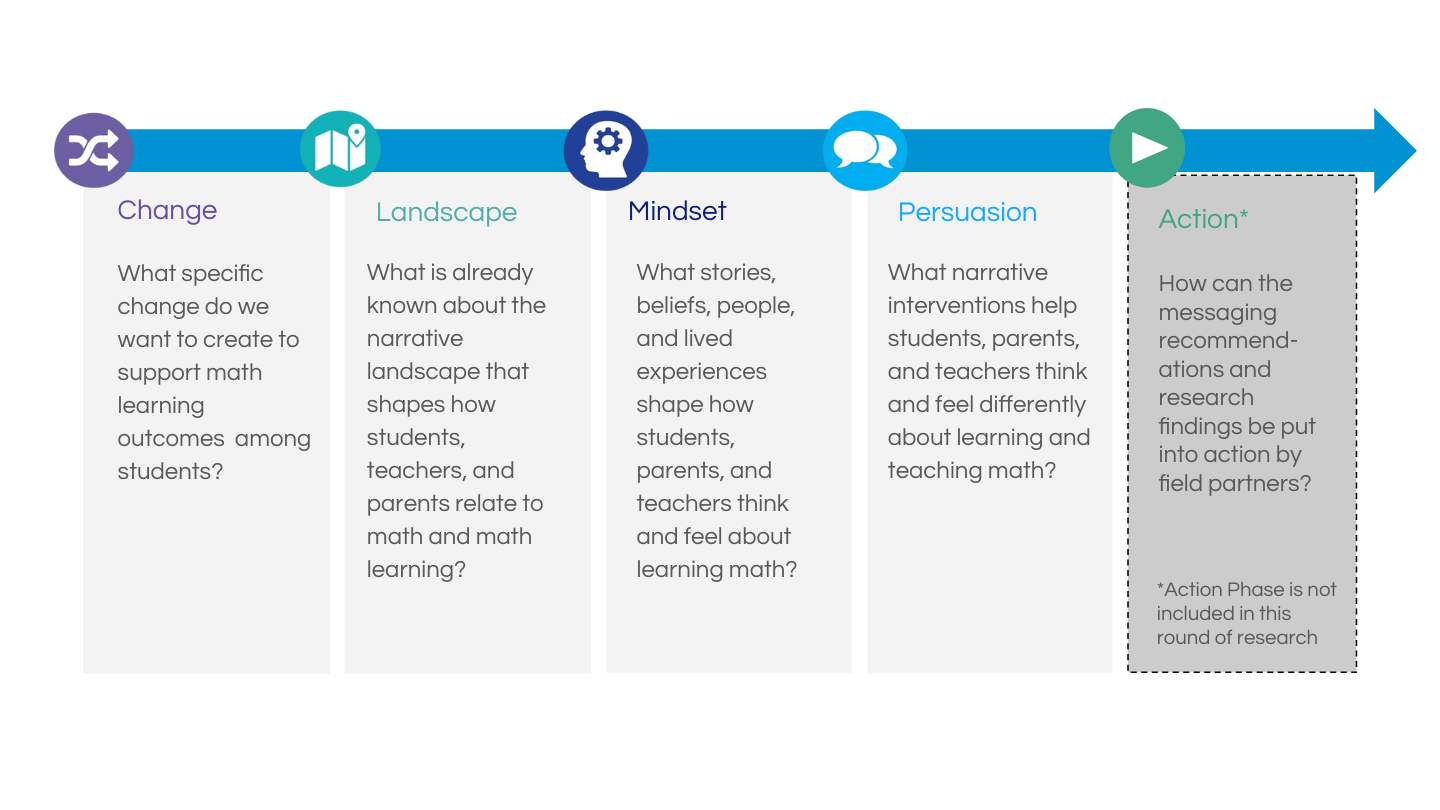Methodology

The Math Narrative Project aims to advance an evidence-based messaging and narrative change strategy to improve math instruction and outcomes for 6th to 10th grade Black and Hispanic^ students of all incomes and Asian American and Pacific Islander (AAPI) and white students from lower-income backgrounds. The project focuses on these students, as they are most likely to encounter systemic barriers to accessing high-quality math education and math resources.
Heartwired Research
Heartwired research focuses on the emotions, beliefs, values, lived experiences, identities, and influences that shape how people think about and behave about an issue or an idea. For the Math Narrative Project, researchers from Goodwin Simon Strategic Research and Wonder: Strategies for Good used the Heartwired approach to understand better how Black and Hispanic^ students and Asian American Pacific Islander (AAPI) and white students from lower-income backgrounds think and feel about learning math, and how cultural narratives about math impact their learning experiences. These groups are most likely to encounter systemic barriers to accessing high-quality math education and math resources.
The Math Narrative Project is structured around four Heartwired phases; Change, Landscape, Mindset, and Persuasion. Typically, Heartwired research includes a fifth phase, Action, in which partner organizations field-test the research insights and messaging recommendations.
A research question anchors each Heartwired research phase, and researchers use qualitative and quantitative methods to develop and test hypotheses in each phase.
^ Consistent with what the research team heard in focus group discussions and in surveys, a 2022 Pew Research survey of 3,030 U.S. Hispanic adults found that 53 percent of Hispanics prefer to describe themselves as “Hispanic,” 26 percent prefer “Latino,” two percent prefer “Latinx,” and 18 percent have no preference.
Summary of Research Phases

Change: What specific change do we want to create to support math learning outcomes among students?
During the Change Phase, the research team facilitates a process in which the researchers, advisors, and other stakeholders develop preliminary hypotheses for how narrative change could be a lever to support better math learning outcomes. The research team then articulates related goals and develops a point of view on which research audiences to focus on. The research team and advisors iterate and refine these hypotheses and goals as the research progresses and early insights begin to emerge.
Landscape: What is already known about the narrative landscape that shapes how students, teachers, and parents relate to math and math learning?
In the Landscape phase, the research team conducted a review of academic literature; 11 hour-long interviews with a racially and geographically diverse set of stakeholders; a media audit that analyzed 97 articles and 8,000+ reader comments from 16 mainstream news and education trade publications across two time periods: July 1, 2018 – June 30, 2019, and July 1, 2021 – June 30, 2022; and an analysis of popular culture content that examined 70 math-related videos on Tiktok and YouTube.
Mindset: What stories, beliefs, people, and lived experiences shape how students, parents, and teachers think and feel about learning math?
The Mindset research began in October 2022 and concluded in May 2023. During this time, the research team conducted 16 online individual in-depth interviews among youth in 6th to 9th grade, 12 in-person focus groups among 74 youth in 8th and 9th grade, 14 online focus groups among 99 parents of 6th to 9th graders, and 8 online focus groups among 54 6th to 9th grade math teachers. Youth, parents, and teachers were separated by race and gender. Moderators for each interview, focus group, and dyad matched the racial/ethnic group they facilitated.
Persuasion: What narrative interventions help students, parents, and teachers think and feel differently about learning and teaching math?
In the Persuasion research, which was conducted from July 2023 to January 2024, the research team conducted 8 friendship dyads among 16 students going into 8th to 10th grades, 12 in-person focus groups among 68 students in 8th to 10th grade, and an asynchronous focus group among 26 parents of 6th to 9th graders. We also conducted 8 synchronous focus groups among 50 6th to 9th grade math teachers and 2 asynchronous focus groups among 49 6th to 9th grade math teachers. In addition, our dial test survey included 820 7th to 10th grade math teachers, 1,091 students in 7th to 10th grade, and 2,312 parents of children in 7th to 10th grade.
Advisory Groups
The research team convened and collaborated with an advisory group that included professionals in math pedagogy, adolescent development, math identity formation, media, learning sciences, and educational psychology, as well as students in their freshman and sophomore years of college (Youth Advisory Panel). Advisors contributed their expertise and knowledge at every phase of the research project.
Research Audiences
The research team conducted interviews, dyads, focus groups, and surveys with students, parents, and teachers who are Black, Hispanic, AAPI, and white and live in California, Florida, Texas, and New York.
- Students
- Black and Hispanic all incomes; AAPI and white, lower-income
- 6th to 10th grade, attending public school
- Parents
- Black and Hispanic all incomes; AAPI and white, lower-income
- At least one child in 6th to 10th grade, and attending public school
- Math Teachers
- Black, Hispanic, AAPI, and white, all incomes
- Teaching math to 6th to 10th grade students in public schools serving primarily lower-income communities*
*In the survey, the researchers accepted qualified teachers from across the 4 states, regardless of the income level of their student body.
Downloads

Detailed Methodology: A more in-depth review of our research methodology, including sample screeners, focus group moderator guides, survey questions, and test content is available for download.

The Literature Review and a report summarizing the Landscape Phase findings are available by request ([email protected]).